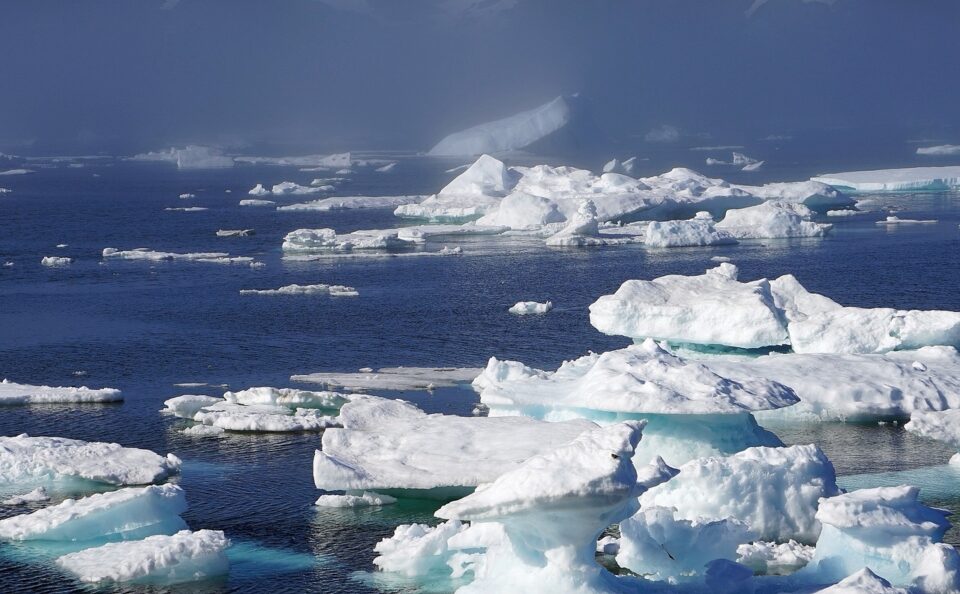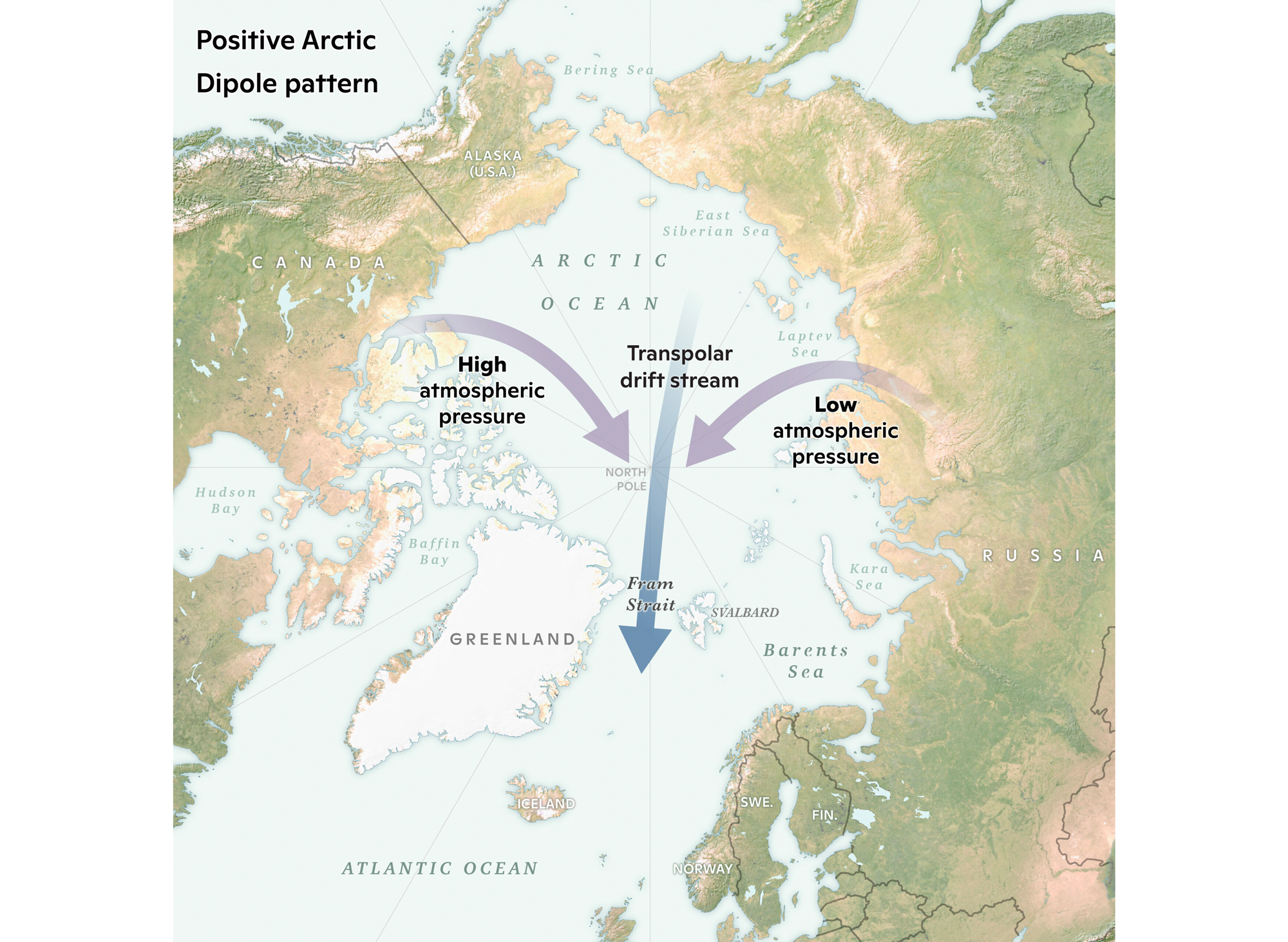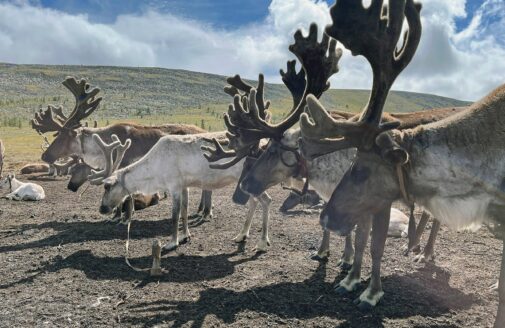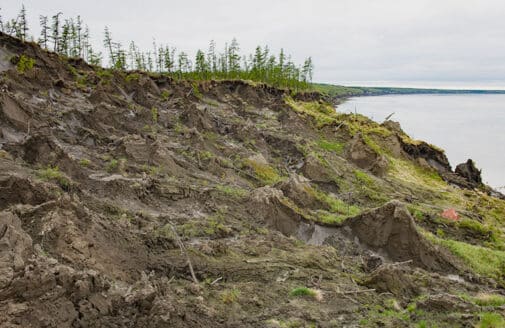Natural atmospheric cycle has been stalling the loss of Arctic sea ice
New research on the role of a wind pattern called the “Arctic dipole” suggests the trend may soon reverse

The loss of Arctic sea ice has been a conspicuous hallmark of climate change. But the rate of loss slowed after sea ice extent hit a record low in summer 2012, even though global and Arctic warming continued unabated. New research by an international team of scientists explains what’s behind that perplexing trend. The findings indicate that the stall is linked to an atmospheric wind pattern known as the Arctic dipole, and that stronger declines in sea ice extent will likely resume when the dipole reverses itself in its naturally recurring cycle.
The many environmental responses to the Arctic dipole are described in a paper published recently in the journal Science. Woodwell Climate’s Dr. Jennifer Francis is among the international cohort of co-authors, led by professor Igor Polyakov of the University of Alaska Fairbanks College of Natural Science and Mathematics, also affiliated with the International Arctic Research Center at UAF.
“This is a multidisciplinary view of what’s going on in the Arctic and beyond,” Polyakov said of the new research. “Our analysis covered the atmosphere, ocean, ice, changing continents and changing biology in response to climate change.”
The Arctic dipole is a large-scale wind pattern that—depending on its direction—can either drive warmer Atlantic Ocean water into the Arctic, or counter that effect. In the Arctic dipole’s present “positive” regime, which scientists say has been in place since 2007, it is the latter. High pressure is centered over the Canadian sector of the Arctic and produces clockwise winds, while low pressure centered over the Siberian Arctic generates counterclockwise winds.

map by Christina Shintani
“This oscillating wind pattern drives upper ocean currents, with year-round effects on regional air temperatures, atmosphere-ice-ocean heat exchanges, sea-ice drift and exports, and ecological consequences,” added Dr. Jennifer Francis, a co-author and Senior Scientist at Woodwell Climate Research Center.
In analyzing oceanic responses to the wind pattern since 2007, the researchers found decreased flow from the Atlantic Ocean into the Arctic Ocean through the Fram Strait east of Greenland, along with increased Atlantic flow into the Barents Sea, located north of Norway and western Russia.
The authors write that, “Water exchanges between the Nordic seas and the Arctic Ocean are critically important for the state of the Arctic climate system” and that sea ice decline is “a true indicator of climate change.”
“We also found that counterclockwise winds from the low-pressure region under the current positive Arctic dipole regime drive freshwater from Siberian rivers into the Canadian sector of the Arctic Ocean,” commented Francis.
This westward movement of freshwater from 2007 to 2021 helped slow the overall loss of sea ice in the Arctic compared to 1992 through 2006. The freshwater layer’s depth increased, making it too thick and stable to mix with the heavier saltwater below. The thick layer of freshwater prevents the warmer saltwater from melting sea ice from the bottom.
The authors write that the switchgear mechanism regulating inflows of sub-Arctic waters has “profound” impacts on marine life. It can lead to potentially more suitable living conditions for sub-Arctic boreal species near the eastern part of the Eurasian Basin, relative to its western part.
A wealth of various data, including direct instrumental measurements, weather observations, and satellite information going back several decades, shows that the Arctic dipole alternates in an approximately 15-year cycle and that the system is probably near the end of the present regime.
“We are beyond the peak of the currently positive Arctic dipole regime, and at any moment it could switch back again,” Polyakov said. “This could have significant climatological repercussions, including a potentially faster pace of sea-ice loss across the entire Arctic and sub-Arctic climate systems.”
The research was funded by the U.S. National Science Foundation and the U.S. Office of Naval Research.








